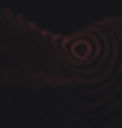Quantum entanglement boosts accuracy of industrial quality inspections

This project has received funding from the European Union’s Horizon 2020 research and innovation programme under Grant agreement No 862644.

Quantum Readout Techniques and Technologies
Quantum hypothesis testing is a fundamental tool in quantum information. It can be used to boost the readout of information from any physical system.
Quantum information is today a mature cutting-edge science that is ready to develop next-generation quantum technologies for the benefit of the wider society. Among its potential future applications, some of the most important will be related to the storage, analysis and manipulation of classical data. Data are in fact becoming so large and complex to make traditional processing techniques completely inadequate, with crucial challenges for important areas like business, health care, and societal security. In line with these increasingly pressing issues, the general aim of this project is to exploit the laws of quantum mechanics and the tools of quantum information to develop new powerful methods for the retrieval and recognition of classical data from physical systems.
More precisely, we aim at showing a substantial quantum-enhancement in several tasks, including:
-
The readout of classical data from optical digital memories (quantum reading)
-
The recognition of classical patterns (quantum pattern recognition)
-
The optical measurement of concentration in fragile biomedical samples (quantum bio-probing)
-
The microwave detection of target objects (microwave quantum illumination or quantum radar)
These objectives are realized starting from the optimization of a general theoretical model at their basis: quantum hypothesis testing. This basic model is then gradually developed into technical studies and proof-of-principle experimental demonstrations of these quantum technologies.

Towards next-generation quantum sensing technologies
Efficient data reading
Efficiently reading bits of data with just a few photons means that new kinds of organic memories and photodegradable materials could be considered. This can be particularly useful at high frequencies, where dye-based supports become extremely photosensitive. The basic working mechanism might be developed into more efficient technologies for data storage/retrieval, with increased transfer rates and capacities.

Superior performance
Thanks to the superior performance at very low energies, quantum reading and pattern recognition might have long-term applications in biology and medicine. The potential is for a fully non-invasive probing of fragile biological samples or human tissues, e.g., for recognizing patterns associated with bacterial growths or cancerous cells. These patterns could be identified by non-invasive quantum-correlated light, whereas classical light would either damage/destroy the samples or be unable to extract meaningful information. Such results could lead to future non-invasive techniques for biomedical imaging.
Quantum radar scanning
The development of a short-range quantum radar can have potential applications in terms of continuous-running low-power environmental scanning, both for safety (as a proximity sensor for obstacle detection) and security (as a scanner or surveillance tool in certain densely-populated environments such as airports).
Latest news

Project information disclosure
7
Participants
6
Academic institutions
1
Industrial partner
€ 2 651 971
Overall budget



